|
Books Should Be Free Loyal Books Free Public Domain Audiobooks & eBook Downloads |
|
|
Books Should Be Free Loyal Books Free Public Domain Audiobooks & eBook Downloads |
|
Art |
|---|
Book type:
Sort by:
View by:
|
By: Pearl White (1889-1938) | |
|---|---|
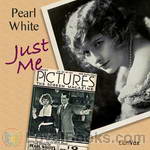 Just Me
Just Me
Perhaps the first memoir written by a film celebrity, Pearl White's Just Me gives a first-person account of the actress' rise to stardom. White guides us through her early childhood, her development as a performer, and finally to her breakout role in The Perils of Pauline--a role that made her the most popular "serial queen" of early cinema. Although romanticized and somewhat embellished, this book gives us a fascinating glimpse into the film industry's earliest years and the various myths of film stardom. | |
By: Percy M. Turner | |
|---|---|
 Van Dyck
Van Dyck
A biography and critique of Van Dyck in The Masterpieces in Colour series. The Plates of the paintings are fully described and the artistic periods in his life's work are given as well as his place in history. | |
By: Professor Louis Hoffman (1839-1919) | |
|---|---|
 Modern Magic: A Practical Treatise on the Art of Conjuring
Modern Magic: A Practical Treatise on the Art of Conjuring
This "how-to" book covers everything for the 1800's illusionist, from stage presence & dress, program and stage arrangement, to how to do tricks with cards, coins, watches, rings, handkerchiefs, dominoes and dice, cups and balls, hats, and other apparatus. "I have purposely limited my disclosures to such illusions as have been sufficiently long before the public to be fairly regarded as common property. Within this limit I have endeavored to make my explanations as complete as possible; but to go beyond it would be to infringe a moral copyright, and to deprive gentlemen to whom Modern Magic is especially indebted, of the well-earned fruits of their labor and invention." | |
By: Rainer Maria Rilke (1875-1926) | |
|---|---|
 Auguste Rodin
Auguste Rodin
Rodin has pronounced Rilke's essay the supreme interpretation of his work. (From the translators’ Preface) Auguste Rodin, 1840-1917, was a French sculptor. Although Rodin is generally considered the progenitor of modern sculpture, he did not set out to rebel against the past. He was schooled traditionally, took a craftsman-like approach to his work, and desired academic recognition, although he was never accepted into Paris's foremost school of art. Sculpturally, Rodin possessed a unique ability to model a complex, turbulent, deeply pocketed surface in clay... | |
By: Riccardo Nobili (1859-1939) | |
|---|---|
 Gentle Art of Faking
Gentle Art of Faking
IIn analysing the Faker one must dissociate him from the common forger; his semi-artistic vocation places him quite apart from the ordinary counterfeiter; he must be studied amid his proper surroundings, and with the correct local colouring, so to speak, and his critic may perchance find some slight modicum of excuse for him. Beside him stand the Imitator, from whom the faker often originates, the tempter who turns the clever imitator into a faker, and the middleman who lures on the unwary collector with plausible tales... | |
By: Richard Henry Dana, Jr. (1815-1882) | |
|---|---|
 Two Years Before the Mast
Two Years Before the Mast
| |
By: Roald Amundsen (1872-1928) | |
|---|---|
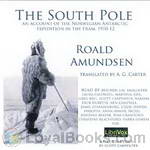 The South Pole; an account of the Norwegian Antarctic expedition in the Fram, 1910-12
The South Pole; an account of the Norwegian Antarctic expedition in the Fram, 1910-12
In contrast to Scott’s South Pole expedition, Amundsen’s expedition benefited from good equipment, appropriate clothing, and a fundamentally different primary task (Amundsen did no surveying on his route south and is known to have taken only two photographs) Amundsen had a better understanding of dogs and their handling, and he used of skis more effectively. He pioneered an entirely new route to the Pole and they returned. In Amundsen’s own words: “Victory awaits him who has everything in order — luck, people call it... | |
By: Robert Wood Williamson | |
|---|---|
 The Mafulu
The Mafulu
The Mafulu, Mountain People of British New GuineaBy Robert W. WilliamsonINTRODUCTION By Dr. A.C. Haddon It is a great pleasure to me to introduce Mr. Williamson's book to the notice of ethnologists and the general public, as I am convinced that it will be read with interest and profit. Perhaps I may be permitted in this place to make a few personal remarks. Mr. Williamson was formerly a solicitor, and always had a great longing to see something of savage life, but it was not till about four years ago that he saw his way to attempting the realisation of this desire by an expedition to Melanesia... | |
By: Rudyard Kipling | |
|---|---|
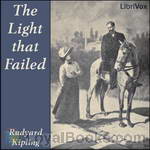 The Light that Failed
The Light that Failed
This novel, first published in 1890, follows the life of Dick Heldar, a painter. Most of the novel is set in London, but many important events throughout the story occur in Sudan or India. It was made into a 1916 film with Jose Collins and a 1939 film by Paramount starring Ronald Colman. | |
By: Ruth Edna Kelley | |
|---|---|
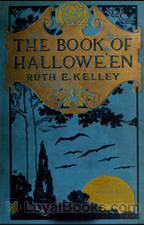 The Book of Hallowe'en
The Book of Hallowe'en
This book is intended to give the reader an account of the origin and history of Hallowe’en, how it absorbed some customs belonging to other days in the year,—such as May Day, Midsummer, and Christmas. The context is illustrated by selections from ancient and modern poetry and prose, related to Hallowe’en ideas. | |
By: Sir Alfred Edward East (1844-1913) | |
|---|---|
 Art of Landscape Painting in Oil Colour
Art of Landscape Painting in Oil Colour
Sketching from Nature, Equipment, Colour, Composition, Trees, Skies, Grass, Reflections, Distance -- chapters rich with timeless oil painting advice by a master landscape artist, Sir Alfred East. East had an exceptional ability to capture the individuality of trees, the quiver of their leaves against the sky. “If we look at a photograph, the edges of the trees do not give you the feeling that the tree is a living thing, they are marked with hard precision against the light, like a solid building, and yet at the same time if we see them in Nature we hear the whisper of their leaves and know that they live and breathe... | |
By: Sir Arthur Conan Doyle (1859-1930) | |
|---|---|
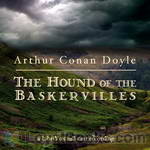 The Hound of the Baskervilles (dramatic reading)
The Hound of the Baskervilles (dramatic reading)
The Hound of the Baskervilles is the third of four crime novels by Sir Arthur Conan Doyle featuring the detective Sherlock Holmes. Originally serialised in The Strand Magazine from August 1901 to April 1902, it is set largely on Dartmoor in Devon in England's West Country and tells the story of an attempted murder inspired by the legend of a fearsome, diabolical hound. | |
By: Sir Grafton Elliot Smith (1871-1937) | |
|---|---|
 Tutankhamen: and the Discovery of His Tomb by the Late Earl of Carnarvon and Mr. Howard Carter
Tutankhamen: and the Discovery of His Tomb by the Late Earl of Carnarvon and Mr. Howard Carter
“Never before in the history of archaeological inquiry has any event excited such immediate and world-wide interest as Mr. Howard Carter's discovery of Tutankhamen's tomb in November 1922. It gives us a new revelation of the wealth and luxury of Egyptian civilization during its most magnificent period. In beauty and design and perfection of craftsmanship, Tutankhamen's funerary equipment is indeed a new revelation of the ancient Egyptians' artistic feeling and technical skill.” “At the time of Tutankhamen the great peoples that had built up civilization were losing their dominant position... | |
By: Sir Walter Scott (1771-1832) | |
|---|---|
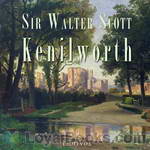 Kenilworth
Kenilworth
An Elizabethan era historical novel by Scotland’s master of fiction, Sir Walter Scott. With a cast of historical and created characters, including the Queen herself, Scott presents the sad history and tragic consequences of the secretive marriage of young Amy Robsart and the Earl of Leicester. (Summary by SK) | |
By: Sir Wilfred Grenfell (1865-1940) | |
|---|---|
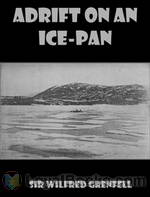 Adrift on an Ice-Pan
Adrift on an Ice-Pan
This autobiographical work describes the author’s harrowing experience caught on a small drifting piece of ice, while crossing a frozen bay by dog team on the Northern Peninsula of Newfoundland. | |
By: Stanley Lane-Poole (1854-1931) | |
|---|---|
 Story of Cairo
Story of Cairo
Although Cairo is most famous for the ancient Egyptian pyramids of Giza located at its outskirts, the city as we know it today dates back only to 969. Since then, numerous rulers of different Muslim dynasties built fortifications, mosques and other buildings that earned Cairo the name "city of a thousand minarets". In this book, Stanley Lane-Poole traces the history of Cairo from the early Muslim period to the British Invasion of 1882. While doing so, he gives vivid descriptions of many of the mediaeval buildings that shape Cairo's cityscape to this day. This book is part of the "Mediaeval Town" series published in the early 20th century. Proof listeners: SaraHale and MrsHand | |
By: Stephen Leacock (1869-1944) | |
|---|---|
 Chronicles of Canada Volume 20 - Adventurers of the Far North
Chronicles of Canada Volume 20 - Adventurers of the Far North
This is volume 20 ofThe Chronicles of Canada series. This volume describes the explorers who braved the Canadian Arctic in search of the Northwest Passage, focusing on Samuel Hearne, Sir Alexander Mackenzie, and Sir John Franklin. | |
By: Talbot Hughes (1869-1942) | |
|---|---|
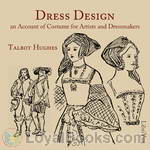 Dress Design: An Account of Costume for Artists and Dressmakers
Dress Design: An Account of Costume for Artists and Dressmakers
Explanations of Western European trends in men and women's fashion from prehistoric times to the Victorian Era. | |
By: Theodore Dreiser (1871-1945) | |
|---|---|
 Color of a Great City
Color of a Great City
Theodore Dreiser was highly acclaimed for his novels and other writing. This non-fiction work takes place in many areas of New York City in the early 20th Century. Dreiser writes of lives packed into cramped tenements, of the likely end, but perhaps not, of an affair, of those who guided ships through turbulent waters, and of life in a home for retired seamen. We're taken to the new subways where track workers risked deadly accidents as they struggled to earn a living. Animal slaughter, the glory and heartbreak of song-writing, the shabby "sandwich man", deadly jealousy in Little Italy, and much more is vividly brought to life by this brilliant author. | |
By: Théodule Ribot (1839-1916) | |
|---|---|
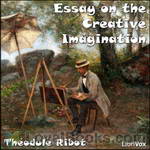 Essay on the Creative Imagination
Essay on the Creative Imagination
“It is quite generally recognized that psychology has remained in the semi-mythological, semi-scholastic period longer than most attempts at scientific formulization. For a long time it has been the “spook science” per se, and the imagination, now analyzed by M. Ribot in such a masterly manner, has been one of the most persistent, apparently real, though very indefinite, of psychological spooks. Whereas people have been accustomed to speak of the imagination as an entity sui generis, as a... | |
By: Thomas Carr Howe (1904-1994) | |
|---|---|
 Salt Mines and Castles: The Discovery and Restitution of Looted European Art
Salt Mines and Castles: The Discovery and Restitution of Looted European Art
"From May 1945 until February 1946, I served as a Monuments, Fine Arts and Archives Officer in Germany. During the first four months of this assignment, I was engaged in field work which included the recovery of looted works of art from such out-of-the-way places as a monastery in Czechoslovakia, a salt mine in Austria, and a castle in Bavaria. Later, as Deputy Chief of the Monuments, Fine Arts and Archives Section, Office of Military Government, U. S. Zone, I participated in the restitution of recovered art treasures to the countries of rightful ownership... | |
By: Thomas Stevens (1854-1935) | |
|---|---|
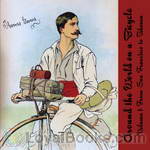 Around the World on a Bicycle, Vol. 1
Around the World on a Bicycle, Vol. 1
Thomas Stevens was the first person to circle the globe by bicycle, a large-wheeled Ordinary. His journey started in April 1884 in San Francisco from where he cycled to Boston to take a steamer to England. Crossing England, France, Central Europe and Asia Minor before he was turned back at the borders of Afghanistan. He returned part of the way to take a ship to Karachi, from where he crossed India. Another steam ship brought him from Calcutta to Hong Kong, and from Shanghai he set over to Japan, finally ending his journey after actually cycling 13... | |
By: Thomas Tapper (1864-1958) | |
|---|---|
 Music Talks With Children
Music Talks With Children
"A book of this kind, though addressed to children, must necessarily reach them through an older person. The purpose is to suggest a few of the many aspects which music may have even to the mind of a child. If these chapters, or whatever may be logically suggested by them, be actually used as the basis of simple Talks with children, music may become to them more than drill and study. They should know it as an art, full of beauty and of dignity; full of pure thought and abounding in joy. Music with these characteristics is the true music of the heart... | |
By: U. Waldo Cutler | |
|---|---|
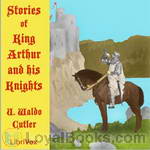 Stories of King Arthur and His Knights
Stories of King Arthur and His Knights
Stories of King Arthur and His Knights. Retold from Malory’s “Morte dArthur”. | |
By: Unknown | |
|---|---|
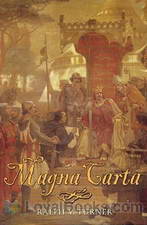 Magna Carta
Magna Carta
The original document is in Latin so this can only be a fairly rough approximation of the actual content. The text used is the first version in the Gutenberg collection. – Magna Carta is the most significant early influence on the long historical process that has led to the rule of constitutional law today. Magna Carta was originally created because of disagreements between the Pope, King John and his English barons over the rights of the King. Magna Carta required the king to renounce certain rights and respect certain legal procedures and to accept that the will of the king could be bound by law. | |
By: Vachel Lindsay (1879-1931) | |
|---|---|
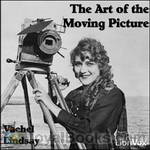 The Art of the Moving Picture
The Art of the Moving Picture
"This 1922 book by poet and sometime cultural critic Vachel Lindsay might have been the first to treat the then-new medium of moving pictures as an art form, one that was potentially as rich, complex, mysterious as far older ones, and whose physical and aesthetic properties were only starting to be understood. The highlight of the book might be “The Motion Picture of Fairy Splendor,” which examines the relationship between film storytelling, magic, myths, legends and bedtime stories. It’s discombobulating, in a good way, to read Lindsay’s attempts to grapple with what, precisely, cinema is... | |
By: Various | |
|---|---|
 Legend Land
Legend Land
Legend Land is a collection of some of the OLD TALES told in those Western Parts of Britain served by the GREAT WESTERN RAILWAY, now retold by LYONESSE | |
 Coffee Break Collection 012 - The Performing Arts
Coffee Break Collection 012 - The Performing Arts
This is the twelfth collection of our "coffee break" series, involving public domain works that are between 3 and 15 minutes in length. These are great for study breaks, commutes, workouts, or any time you'd like to hear a whole story and only have a few minutes to devote to listening. The theme for this collection is "The Performing Arts", with works about theatre, music, dance, and film! Summary by Rosie. | |
 Dial, May 1920
Dial, May 1920
An example of one of the leading literary magazines of the early 20th Century. Poetry by e.e. cummings and Louise Bryant , a short story by Sherwood Anderson, a memoir of the late poet James Flecker, theater and book reviews by Gilbert Seldes, and other critical works. | |
 Mount Rushmore National Memorial
Mount Rushmore National Memorial
This publication of the Mount Rushmore National Memorial Society of the Black Hills presents the history and description of one of the most iconic colossal sculptures of the world. Originally conceived by Doane Robinson of South Dakota, the memorial was designed by renowned sculptor, Gutzon Borglum who also gave oversight of the construction along with his son Lincoln. It depicts four U.S. Presidents – Abraham Lincoln, George Washington, Thomas Jefferson, and Theodore Roosevelt. - Summary by Larry Wilson | |
 Art in Australia, No. 1, 1916
Art in Australia, No. 1, 1916
In 1916, three prominent identities in the Sydney art world - Sydney Ure Smith, Bertram Stevens and Charles Lloyd Jones - got together to publish Australia's first art magazine. Their aim was to make the work of Australian artists know to the Australian public, and, through high quality reproductions, to give an idea of its quality to those who were unable to see the originals. All of the 102 issues of Art in Australia, published between 1916 and 1942 have now been made available, complete with illustrations, on the National Library of Australia's Trove web site... | |
 Art in Australia, No. 2, 1917
Art in Australia, No. 2, 1917
In 1916, three prominent identities in the Sydney art world - Sydney Ure Smith, Bertram Stevens and Charles Lloyd Jones - got together to publish Australia's first art magazine. Their aim was to make the work of Australian artists known to the Australian public, and, through high quality reproductions, to give an idea of its quality to those who were unable to see the originals. All of the 102 issues of Art in Australia, published between 1916 and 1942 have now been made available, complete with illustrations, on the National Library of Australia's Trove web site... | |
By: Victor Appleton (1873-1962) | |
|---|---|
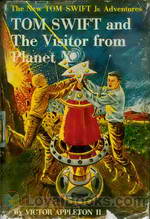 Tom Swift and the Visitor From Planet X
Tom Swift and the Visitor From Planet X
If you haven't come across the 200-book series about Tom Swift Jr, this book would be an interesting one to start with. The series is aimed at the young adult readership, probably male, and the young adolescent hero, Tom Swift Jr is the son of Tom Swift Sr. The books portray the perennially 18-year-old Tom, a tall and angular youngster, possessed of a very high intelligence and presence of mind. Regular characters include his parents, younger sister Sandy, best buddy Bud Barclay, his regular date Phyllis Newton, and the comic roly-poly Chow Winkler... | |
By: Walter George Bell (1867-1942) | |
|---|---|
 Tower of London
Tower of London
A short book, whose chapters were originally published in The Daily Mail, which explores the history and facts of each of the structures that make up the Tower. - Summary by Janet 99 | |
By: Walter Pater | |
|---|---|
 Appreciations, with an Essay on Style
Appreciations, with an Essay on Style
Appreciations, with an Essay on Style, is a collection of Walter Pater's previously-published essays on literature. The collection was well received by public and critic since its first edition, in 1889. The volume includes an appraisal of the poems of Dante Gabriel Rossetti, first printed in 1883, a few months after Rossetti's death; an essay on Thomas Browne, whose Baroque style Pater admired; and a discussion of Measure for Measure, one of Pater's most often reprinted pieces. The second edition, published in 1890, had a few modifications, and is the basis for all other editions of the book. | |
By: Washington Irving (1783-1859) | |
|---|---|
 The Alhambra: A Series of Tales and Sketches of the Moors and Spaniards
The Alhambra: A Series of Tales and Sketches of the Moors and Spaniards
This is a collection of essays, verbal sketches, and stories by Washington Irving. Irving lived at the Alhambra Palace while writing some of the material for his book. In 1828, Washington Irving traveled from Madrid, where he had been staying, to Granada, Spain. At first sight, he described it as "a most picturesque and beautiful city, situated in one of the loveliest landscapes that I have ever seen." He immediately asked the then-governor of the historic Alhambra Palace as well as the archbishop of Granada for access to the palace, which was granted because of Irving's celebrity status... | |
By: Wassily Kandinsky (1866-1944) | |
|---|---|
 Concerning the Spiritual in Art
Concerning the Spiritual in Art
Published in 1911, Kandinsky's book compares the spiritual life of humanity to a pyramid -- the artist has a mission to lead others to the pinnacle with his work. The point of the pyramid is those few, great artists. It is a spiritual pyramid, advancing and ascending slowly even if it sometimes appears immobile. During decadent periods, the soul sinks to the bottom of the pyramid; humanity searches only for external success, ignoring spiritual forces. | |
By: Wilkie Collins (1824-1889) | |
|---|---|
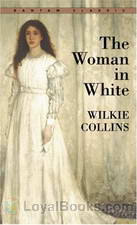 The Woman in White
The Woman in White
Wilkie Collins’s The Woman in White tells the story of two half-sisters, Laura Fairlie and Marian Halcombe who were embroiled in the sinister plot of Sir Percival Glyde and Count Fosco to take over their family’s wealth. It’s considered to be one of the first “sensation novels” to be published. Like most novels that fall into this category, the protagonists here are pushed to their limits by the villains before they finally got the justice they deserved. The story begins with Walter Hartright helping a woman dressed in white who turned out to have escaped from a mental asylum... | |
By: Willard M. Smith | |
|---|---|
 Gloves Past and Present
Gloves Past and Present
From the preface: "For thirty years I have devoted myself to the practical problems of the glove industry, and my connection with one of the substantial firms of master-merchant-glovers in the world has taught me how little gloves are known or appreciated by the millions of persons who buy them and wear them. The pursuit of glove lore--the historic romance of the glove--has long since been with me a selfish recreation. Now I desire to share it, as well as the practical knowledge, with all men and women who have missed seizing upon the real relation which gloves bear to life." | |
By: William Chambers (1723-1796) | |
|---|---|
 Dissertation on Oriental Gardening
Dissertation on Oriental Gardening
A little essay on the Chinese style of gardening, as opposed to the continental style, which the author finds too formal with too many straight lines, and the English style, about which he is equally disparaging. In his preface, he says that his dissertation is upon "... the Chinese manner of gardening, which is collected from my own observations in China, from conversations with their Artists, and remarks transmitted to me at different times by travellers." "... Their gardeners are not only Botanists, but also Painters and Philosofers... | |
By: William Dean Howells (1837-1920) | |
|---|---|
 Coast of Bohemia
Coast of Bohemia
William Dean Howells is at his iconoclastic best in this exploration of bourgeois values, particularly in the clash between respectable society and the dubious bohemian world of Art and Poetry. Cornelia Saunders has everything going for her in her middle-class world: comfort, good looks, attentive young men. She seems willing to risk it all for the sake of what might be an artistic Gift, venturing with great trepidation to put her foot over the line into Bohemia to see if it might be the thing for her. Skewering the conventions of sentimental literature as usual, Howells keeps the reader guessing to the end as to the fate of Cornelia and her Gift. | |
By: William Hanford Edwards | |
|---|---|
 Football Days: Memories of the Game and of the Men behind the Ball
Football Days: Memories of the Game and of the Men behind the Ball
A book reminiscent of the days when football was gaining popularity in America by MHAIJH85 | |
By: William Morris (1834-1896) | |
|---|---|
 Signs of Change
Signs of Change
In the 1880s William Morris, the artist and poet famously associated with the Arts and Crafts movement, left the Liberal Party and threw himself into the Socialist cause. He spoke all over the country, on street corners as well as in working men's clubs and lecture halls, and edited and wrote for the Socialist League's monthly newspaper. Signs of Change is a short collection of his talks and writings in this period, first published in 1888, covering such topics as what socialism and work should be, and how capitalism and waste developed. | |
By: William Ralston Shedden-Ralston (1828-1889) | |
|---|---|
 Russian Fairy Tales
Russian Fairy Tales
Russian Fairy Tales is an anthology of stories by a noted Russian scholar and translator. The 51 stories are thematically organized with introductory material to put them both in the context of Russian folklore and in their relation to the myths of other cultures. This text has something for the intellectual reader as well as for someone who just likes a good fairy tale. | |
By: William Sangster (1808-1888) | |
|---|---|
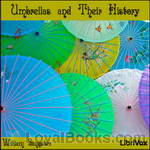 Umbrellas and Their History
Umbrellas and Their History
A whimsically serious look at the umbrella and society. | |
By: William Scott-Elliot (?-1930) | |
|---|---|
 Story of Atlantis and the Lost Lemuria
Story of Atlantis and the Lost Lemuria
This volume contains two publications by W. Scott-Elliot, namely The Story of Atlantis (1896) and The Lost Lemuria (1904). A theosophist and believer of the Occult, W. Scott-Elliot gives us a description of the history and structure of Atlantis and Lemuria, along with what he considers evidence of this. The Story of Atlantis is prefaced by Alfred Percy Sinnett. | |